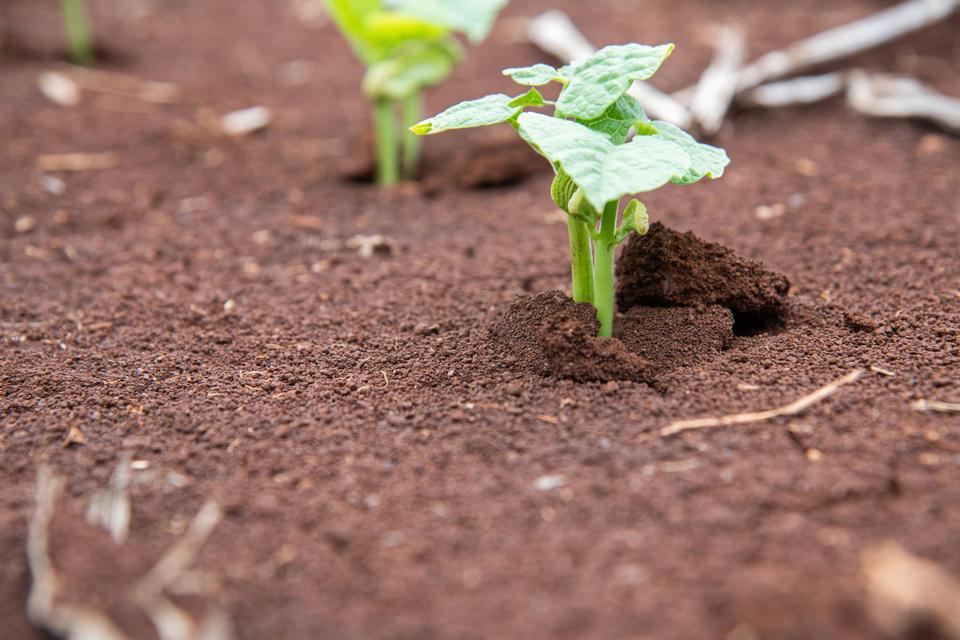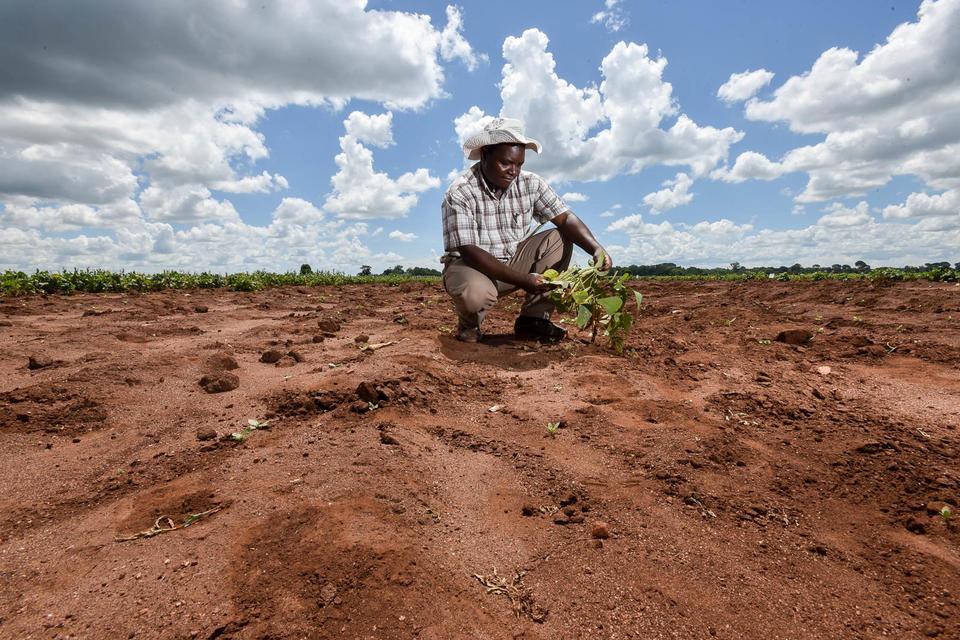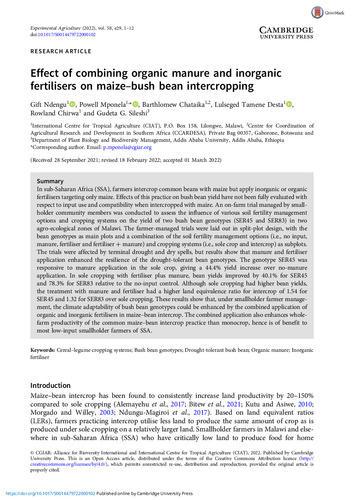From the Field Zero soil loss: towards conserving Africa’s new gold

Across Africa, soil erosion and runoff are depleting farmers’ harvests. But one plot shows “if you take care of soil, it will take care of you”.
By: Georgina Smith
Just before the sun sets, Anne Wangari wades through thick bunches of spinach on her plot. Nestled among the sloping hills surrounded by coffee fields in Embu County, this bumper harvest is a surprise to her. Previously, “I was planting crops in vain,” she explained. “They started withering and I didn’t understand what the problem was.”
Then, she was visited by experts from The Alliance of Bioversity International and CIAT and the Kenya Agriculture and Livestock Research Organization (KALRO). After conducting a soil test, they explained that the threat was in her soil. More specifically, that she was losing topsoil containing critical nutrients, because the rains were washing them away.
“Once I was trained, I realized the soil had a problem,” she explains. Then, she learned techniques to prevent soil from washing away, especially considering the recent heavy rains and hilly terrain surrounding her farm, and to improve its fertility and performance. With the correct organic fertilizer, she has boosted her harvest and more than doubled her income. “There was a time I was used to farm all over, and would not even get to ten bags of maize,” she says. “Now I've even done half of it, and I've gotten seventeen bags of maize and three bags of Nyota beans.”
“Soil is gold. If you ruin the soil, it will ruin you. If you take care of it, it will take care of you.”

Farmer Anne Wangari practices soil conservation techniques to improve her harvest and income, near Embu, Kenya. Credit: Georgina Smith
A massive loss
With exacerbating impacts of changing climate, soil loss and runoff in crop lands is increasing. But down-slope runoff not only carries away critical nutrients, including up to 70 kilograms per hectare of nitrogen; 10 kilograms per hectare for phosphorus and 50 kilograms per hectare for potassium. The soil also carries away agrochemicals which infiltrate water bodies, triggering a cascade of ecological consequences: from poor crop yields to algal blooms and water hyacinth that suffocate aquatic life and contaminate drinking water.

Sloping land is a major challenge for farmers and causes soil erosion and run-off on farms if conservation measures are not taken. Credit: Georgina Smith
Soil degradation and diminishing soil fertility affects 65% of vital arable lands across sub-Saharan Africa. Indeed, 25% of the region’s total land area is severely degraded, costing about US$68 billion annually, and bringing devastating consequences for farmers struggling to put food on the table. This loss deprives communities of diverse foods, healthy ecosystems and the opportunity to mitigate climate change through carbon sequestration.
Improving soil fertility is also a delicate balance. Management techniques and effectiveness of fertilizer use remain limited without soil erosion control. At landscape level, efforts to manage soil better must be complimented by zero soil loss techniques, to boost nutrient use efficiency while focusing on soil and water conservation at the same time.
See Anne's farm in this video
Bouncing back
Wangari has since applied regenerative agricultural strategies that are backed by science and have been shown to improve harvests and incomes. These strategies include adopting conservation agriculture, innovative crop associations such as intercropping maize and beans, in-situ soil and water conservation, agroforestry, planting grass buffers on sloping land, or terracing land to trap moisture and prevent soil loss, or preserving riparian buffer zones.
In the intercropping, Wangari uses a “four-four” system of planting, sowing four rows of maize, then four rows of beans, allowing her to apply manure to her maize and spread mulch on her beans more easily, with small trenches in between each row to capture water.
Due to the high price of inorganic fertilizer, Wangari uses additional income from her crops to buy geese, goats and chickens – using the manure from the animals to further boost her harvest of beans, spinach, onions and maize among other crops. As she weeds a small patch on her plot, a group of neighbors come to pick cabbage and learn the new techniques. Now, she supplies crops, seedlings and advice to others in the village. She has enough food to feed her family, sell for additional income and pay helpers to keep the farm in good shape. “I’m not worried about school fees or shopping,” she says. “I comfortably pay for these from my farm.”

Anne Wangari has geese and chickens to provide manure and extra income. Credit: Georgina Smith
But to be effective in the long-term, such techniques need to be applied at scale. At the landscape level, targeted use of fertilizers and soil health interventions must be coupled with complementary restoration practices.
For this to happen, farmers require support, including training in best agricultural practices and access to finance to invest in soil health solutions. This could be through repurposing of public subsidies and incentives towards regenerative production systems through public-private partnerships. Such measures not only safeguard soil health and reduce investment costs, while promoting biodiversity. They bolster the resilience of vulnerable smallholder farmers like Wangari, to better withstand shocks and climate extremes in future.
The Team
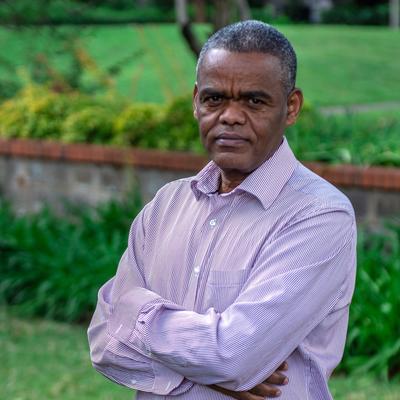
Lulseged Desta
Director, Multifunctional Landscape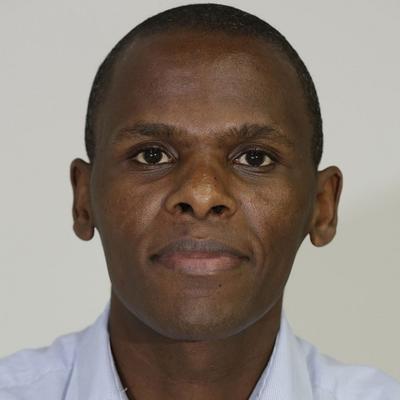
Job Kihara
Principal Scientist, Soil and Water Management
Boaz S. Waswa
ScientistRelated content
